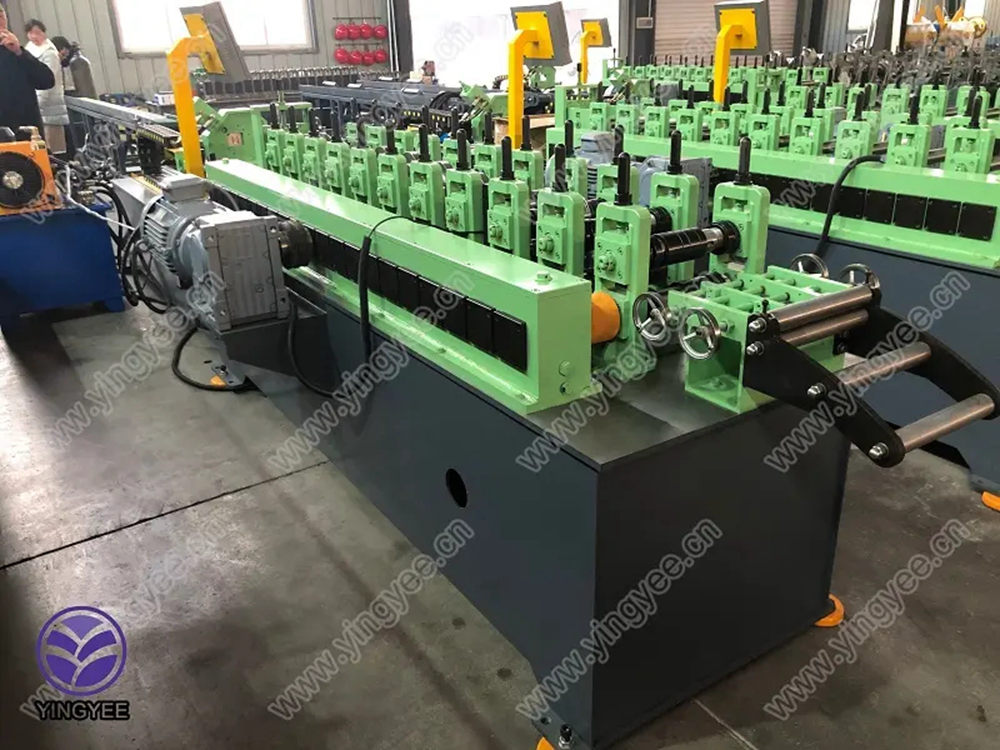
C-Shaped Steel Roll Forming Machine An Overview
The construction and manufacturing industries continually evolve with advancements in technology, leading to more efficient and cost-effective solutions. Among these innovations, the C-shaped steel roll forming machine stands out as a vital tool for producing high-quality steel profiles. These machines play a crucial role in various applications, including construction, automotive, and structural engineering.
What is a C-Shaped Steel Roll Forming Machine?
A C-shaped steel roll forming machine is a specialized piece of equipment designed to create C-shaped steel sections from flat metal sheets or coils. The process involves feeding raw materials into the machine, which then shapes the steel through a series of rollers and dies. Each roller progressively bends the steel into the desired profile, resulting in a continuous C-shaped section that can be cut to length as needed.
The Process of Roll Forming
The roll forming process is characterized by its efficiency and precision. Initially, the steel coil is uncoiled and fed into the machine. As the steel passes through multiple sets of rollers, it undergoes a gradual bending process. The user can adjust the roller settings to control the final dimensions of the C-shaped profile, such as height, width, and thickness. This adaptability is one of the key advantages of roll forming technology, as it allows manufacturers to produce customized profiles that meet specific design requirements.
Once formed, the C-shaped sections can be further processed to enhance their properties. Techniques such as galvanization or painting may be employed to improve corrosion resistance and aesthetic appeal. These versatile profiles are ideal for various structural applications, from framing systems to supports and brackets.
Advantages of Using C-Shaped Steel Roll Forming Machines

1. Efficiency Roll forming machines operated by skilled workers can produce large quantities of C-shaped steel sections in a relatively short time frame. This efficiency significantly reduces labor costs and improves turnaround times for projects.
2. Consistency The automation and precision of roll forming ensure that each profile is produced to exact specifications, minimizing variations and waste. This consistency is essential in construction, where structural integrity relies on uniform materials.
3. Material Savings Roll forming optimizes the use of raw materials, as the process generates minimal waste compared to other manufacturing methods. The ability to create complex shapes and profiles without significant excess material contributes to overall cost savings.
4. Versatility C-shaped steel sections can be used across a wide range of applications, showcasing their versatility. From commercial buildings to residential construction, the demand for C-shaped profiles continues to grow, making roll forming machines indispensable.
5. Durability Steel is known for its strength and durability. C-shaped steel sections maintain these properties, providing long-lasting support in structural applications. Additionally, various surface treatments can enhance their lifespan and performance.
Conclusion
The C-shaped steel roll forming machine represents a significant advancement in manufacturing technology, allowing for the efficient and precise production of essential steel profiles. As industries continue to seek more effective solutions for their structural needs, roll forming machines are poised to play an even more prominent role. Their combination of efficiency, consistency, and versatility makes them a popular choice among manufacturers worldwide. As construction and engineering projects evolve, C-shaped steel sections produced by these machines will remain vital to the integrity and success of modern infrastructures.